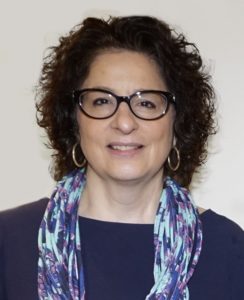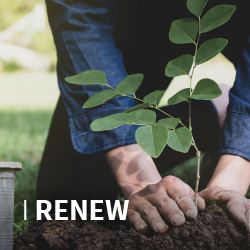Southeastern U.S. government, business, and nonprofit leaders support and expand recycling market-development toward realizing a circular economy, helping the nation meet climate goals, and reducing greenhouse gas emissions. ISRI President Robin Wiener keynoted Dec. 1 at the Southeast Recycling Development Council’s (SERDC) virtual annual meeting held Nov. 30 and Dec. 1. Wiener’s speech gave a wide-ranging view of the association’s efforts to promote recycling all over North America.
“What is recycling? What is a recyclable material?” Wiener asks. “Depending on how you define them, that can have significant impacts not only for regulation but for how the material is handled. So, it’s very important that we have consensus and hopefully with that consensus at the federal level we can get it at the state level.”

The $1 trillion infrastructure law that President Joe Biden signed Nov. 15 includes a number of recycling-friendly provisions: the $75 million Recycling Enhancements to Collection and Yield through Consumer Learning and Education (RECYCLE) Act; $400 million for critical minerals mining and recycling; $50 million for battery recycling; and $100 million for the Environmental Protection Agency’s pollution-prevention program.
The bipartisan and bicameral RECYCLE Act authorizes a $15 million annual EPA grants program to help educate consumers about reducing contamination in residential and community recycling. ISRI was instrumental in developing the RECYCLE Act and collaborating with congressional champions. “It is forward thinking, and it also focuses on what we think are those solutions which address those pressure points in the residential recycling system in particular,” Wiener says.
The act requires the EPA to develop a model recycling program toolkit to improve recycling rates and to decrease contamination in the recycling stream. The agency must review and revise, if proper, its comprehensive procurement guidelines for federal agencies. The infrastructure package includes provisions for battery research, voluntary labeling, and how to recycle lithium-ion batteries, while supplying advisories for worker protections.
The Environmental Protection Agency’s new National Recycling Strategy announced Nov. 15 is the first time the strategy addresses the climate impacts of producing, using, and disposing of materials and focuses on recycling facilities’ human health and environmental impacts. “It is forward thinking, and it also focuses on what we think are those solutions which address those pressure points in the residential recycling system in particular,” Wiener says.
Carlton Waterhouse, the EPA’s deputy administrator of land and emergency management, explained the strategy to SERDC attendees on Nov. 30. “We really have to have a transformative vision for our waste management system. One that is more inclusive, more equitable, and really reflects the urgency of the climate crisis,” he states.
The National Recycling Strategy includes five strategic goals with specific actions to strengthen the U.S. recycling system:
- Improve markets for recycled commodities.
- Increase collection of recyclable materials and improve recycling infrastructure.
- Reduce contamination in the recycled materials stream.
- Enhance policies and programs to support recyclability and recycling.
- Standardize measurement and increase data collection.
The strategy focuses on five key materials: aluminum, plastics, steel, food, concrete and cement. Electronics are another area the EPA will examine. “It’s critical that we implement circular economy strategies that are inclusive of communities with Environmental Justice concerns and pursue iterations that afford all people the benefits of cleaner processing of material,” Waterhouse says.

“Environmental Justice as well as climate change have been put at the center of the Biden Administration and a whole government approach is being taken on each—appropriately; these are both very important issues,” Wiener says. “We think there’s a lot of opportunity here. Certainly, there’s a need for continued environmental stewardship in the communities where we’re all located as well as efforts to protect the health and safety of workers and communities that surround recycling facilities. I’m really proud of the efforts that recyclers have taken within their communities.”
Wiener and Waterhouse noted the need for consumer products designed to be recycled and to have multiple lifecycles. ISRI is working with the EPA to ensure the agency’s enforcement of for-profit recycling facilities is fairly conducted.
Wiener’s presentation to SERDC included supply chain backlogs and the Ocean Shipping Reform Act, which aims to give the Federal Maritime Commission more power to enforce regulations to give importers and exports relief from unfair shipping practices; extended producer responsibility measures making their way through state legislatures; and movements by the EU and Asian nations to define and require materials purity for imports.
Wiener devoted a segment of her talk to ISRI’s 2021 Recycling Industry Economic Impact Study. The study shows recycling contributes $116.8 billion to the U.S. economy, with 506,000 jobs related to the industry and a combined payroll just over $34 million. That’s a message that resonates with SERDC attendees. On Nov. 30, Elizabeth Biser, North Carolina’s secretary of environmental quality, noted, “More than 15,000 North Carolinians are employed in recycling related jobs, with a total payroll of $759 million dollars.”

Hendersonville, N.C.-based SERDC’s mission is to unite industry professionals, organizations, government agencies and individuals engaged in the business of recycling; to foster communications among those groups; to promote sustainable recycling programs; and, to coordinate education and public awareness activities related to recycling.
Wiener’s talk Dec. 1 included ISRI projects that SERDC members could benefit from including development of a new recyclability protocol for fiber-based packaging; strengthening the ISRI Specifications; and expanding the workforce pipeline for recycling through internship and apprenticeship programs. She encouraged SERDC attendees to attend ISRI2022, which will be March 21–24 in Las Vegas.
Body image 1 courtesy of ISRI. Caption: ISRI President Robin Weiner. Body image 2 courtesy of the EPA. Caption: Carlton Waterhouse: deputy administrator, land and emergency management, EPA. Body image 3 courtesy of North Carolina DEQ. Caption: Elizabeth Biser, secretary, North Carolina Department of Environmental Quality.
Additional Resources













